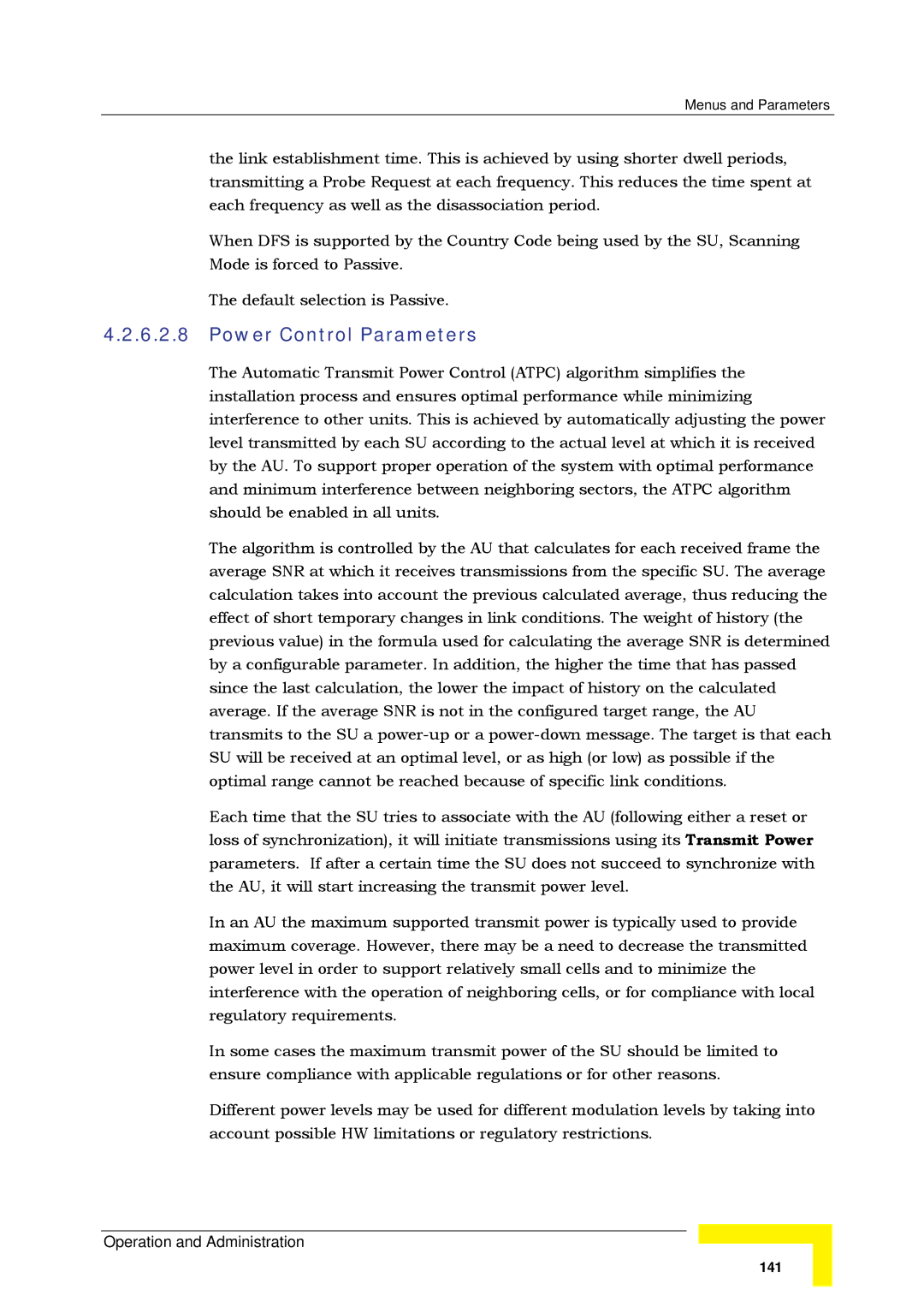
Menus and Parameters
the link establishment time. This is achieved by using shorter dwell periods, transmitting a Probe Request at each frequency. This reduces the time spent at each frequency as well as the disassociation period.
When DFS is supported by the Country Code being used by the SU, Scanning Mode is forced to Passive.
The default selection is Passive.
4.2.6.2.8Power Control Parameters
The Automatic Transmit Power Control (ATPC) algorithm simplifies the installation process and ensures optimal performance while minimizing interference to other units. This is achieved by automatically adjusting the power level transmitted by each SU according to the actual level at which it is received by the AU. To support proper operation of the system with optimal performance and minimum interference between neighboring sectors, the ATPC algorithm should be enabled in all units.
The algorithm is controlled by the AU that calculates for each received frame the average SNR at which it receives transmissions from the specific SU. The average calculation takes into account the previous calculated average, thus reducing the effect of short temporary changes in link conditions. The weight of history (the previous value) in the formula used for calculating the average SNR is determined by a configurable parameter. In addition, the higher the time that has passed since the last calculation, the lower the impact of history on the calculated average. If the average SNR is not in the configured target range, the AU transmits to the SU a
Each time that the SU tries to associate with the AU (following either a reset or loss of synchronization), it will initiate transmissions using its Transmit Power parameters. If after a certain time the SU does not succeed to synchronize with the AU, it will start increasing the transmit power level.
In an AU the maximum supported transmit power is typically used to provide maximum coverage. However, there may be a need to decrease the transmitted power level in order to support relatively small cells and to minimize the interference with the operation of neighboring cells, or for compliance with local regulatory requirements.
In some cases the maximum transmit power of the SU should be limited to ensure compliance with applicable regulations or for other reasons.
Different power levels may be used for different modulation levels by taking into account possible HW limitations or regulatory restrictions.
Operation and Administration
141
